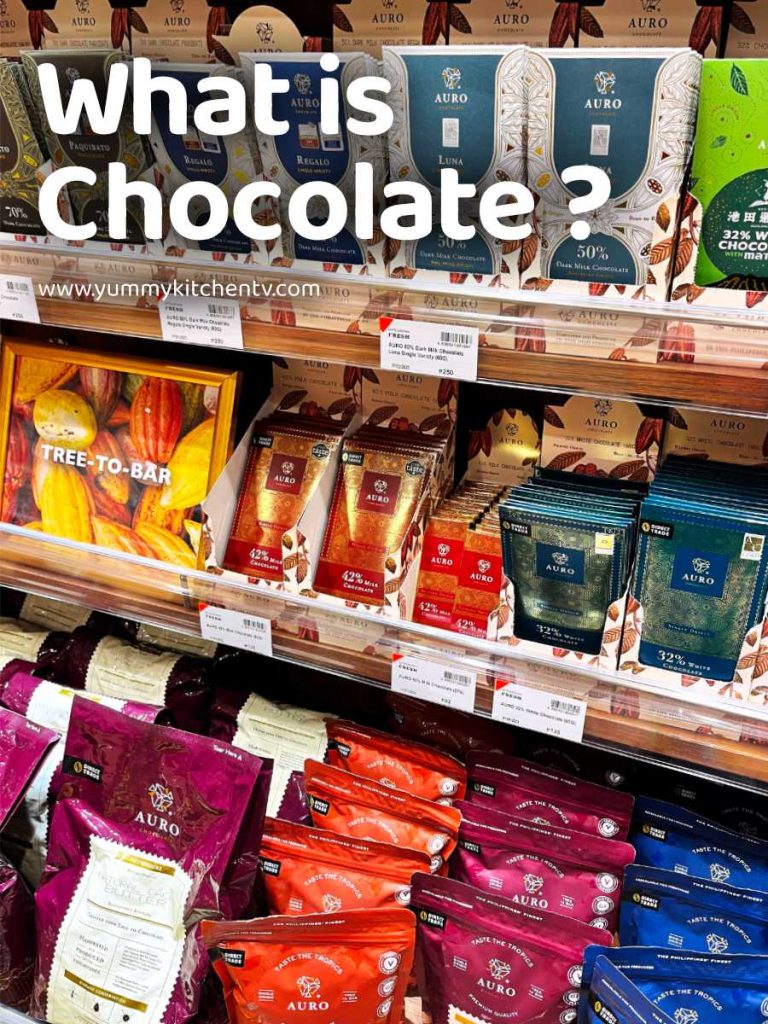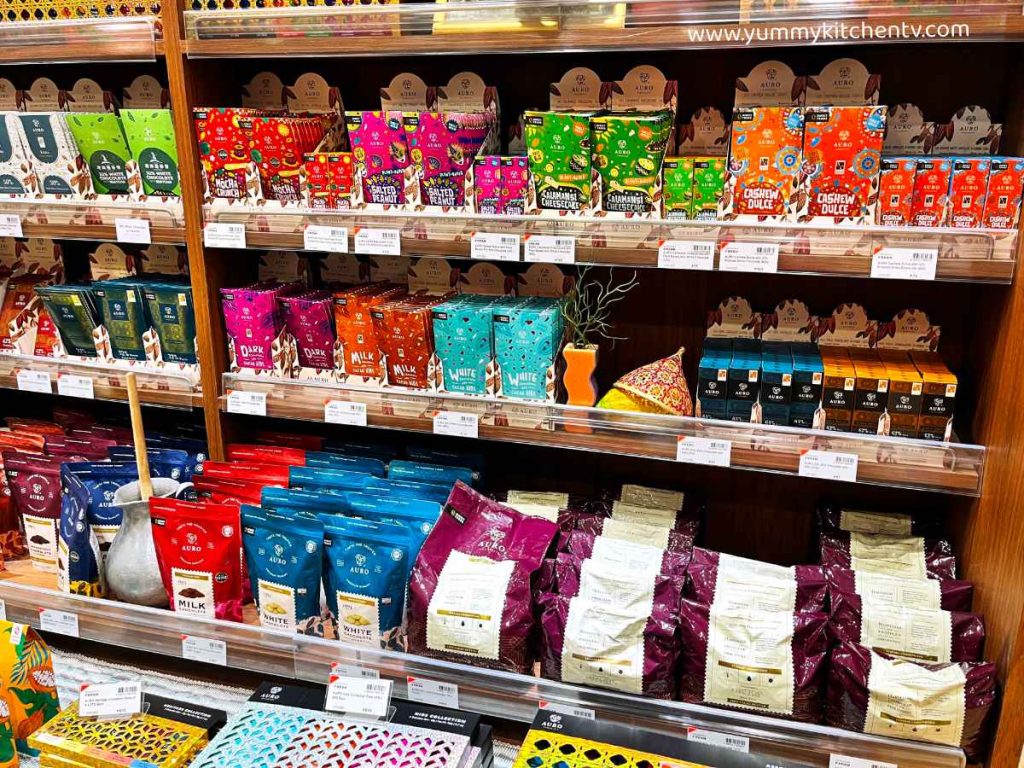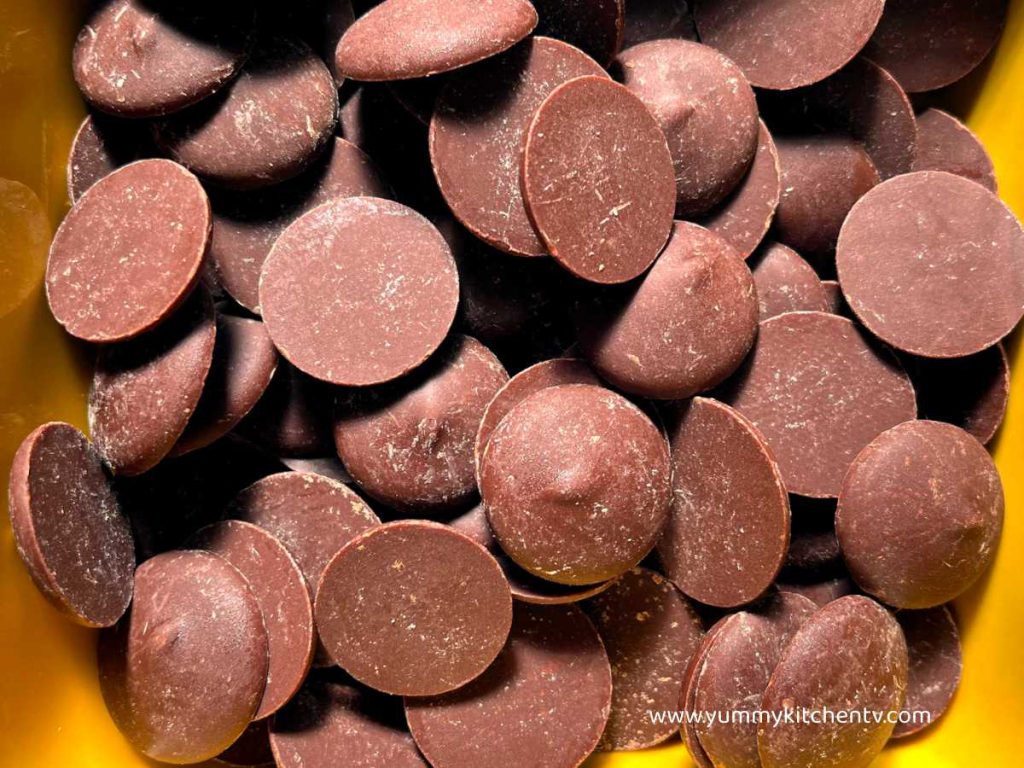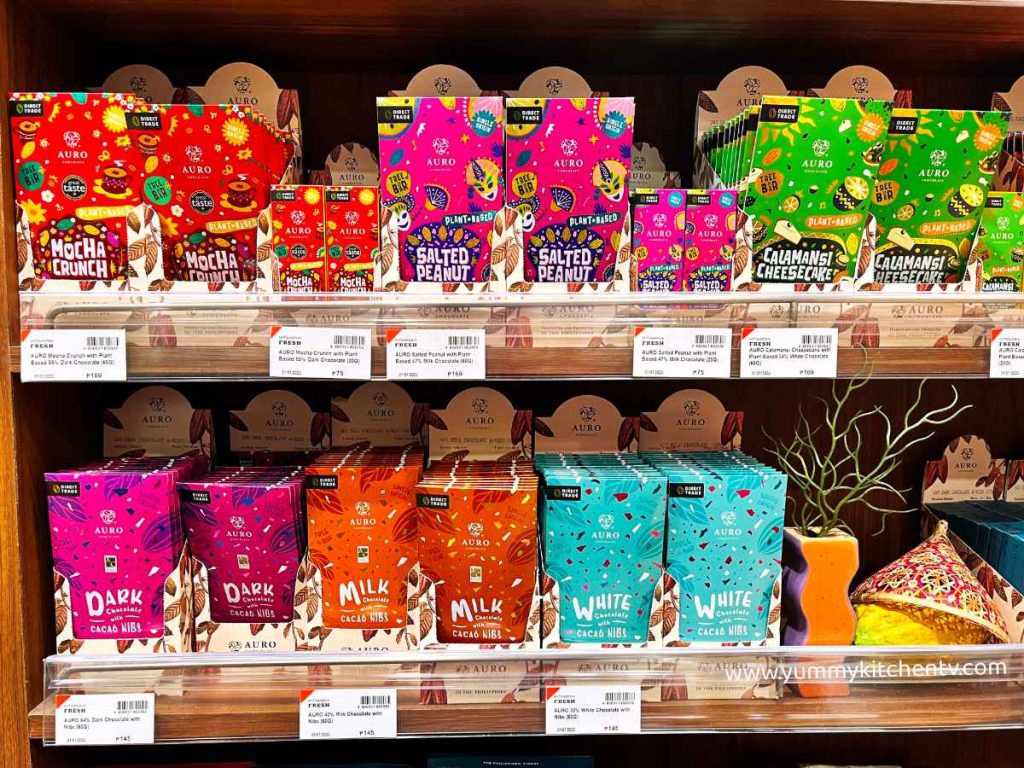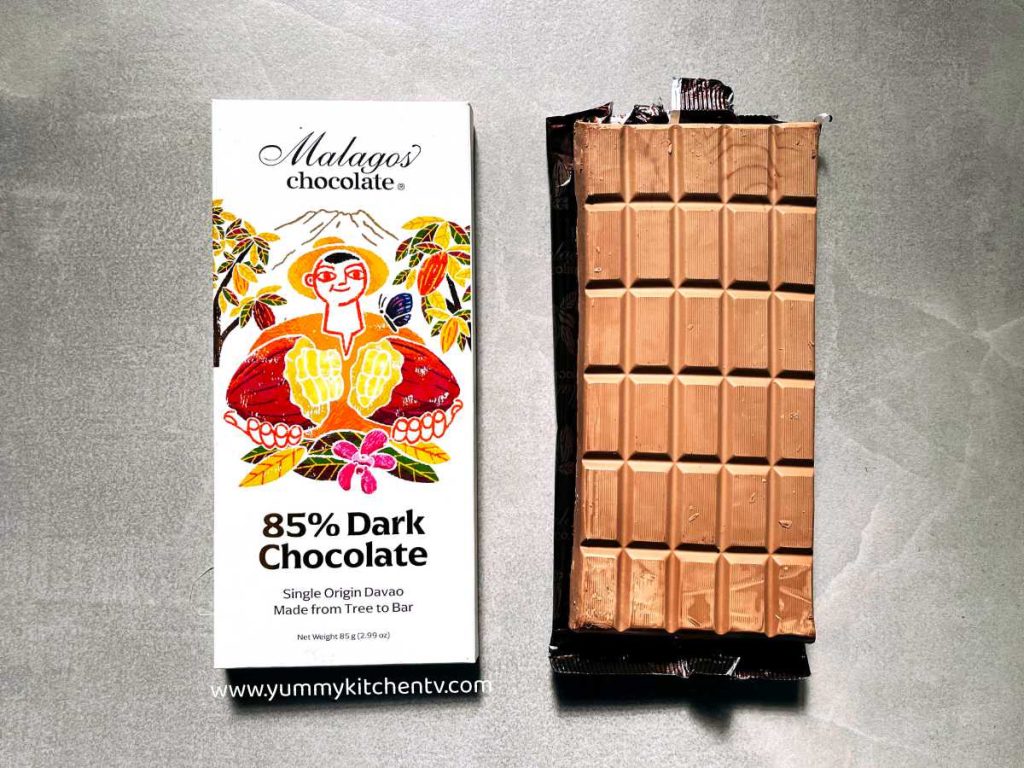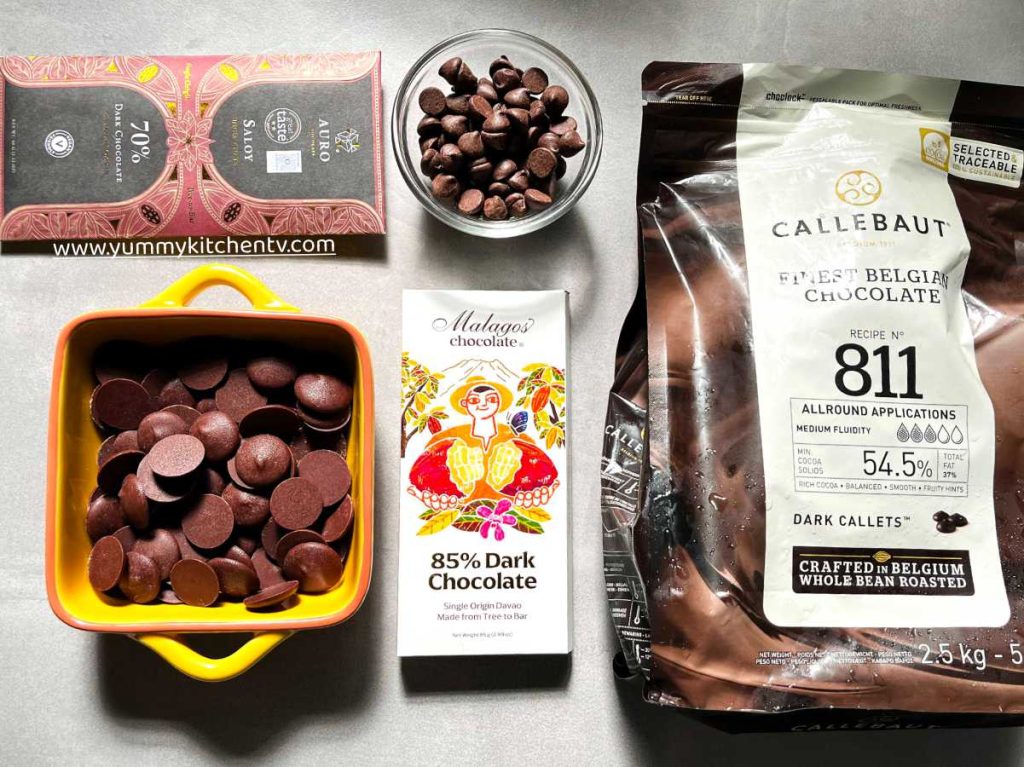Chocolate is a food product made of roasted cacao seeds, that are grounded, then turned into a liquid, paste, or solid, eaten once it solidifies into a chocolate bar, or sometimes flavored by itself or with other extracts and or other ingredients like nuts, candies, and many more. These are usually consumed as a candy, beverage, or added into desserts, sometimes you can even find them mixed into savory dishes. While these are commonly found in sweets and treated as a snack-like dessert, these actually great for your health, being that these have high levels of antioxidants and minerals. This delicious treat especially the dark version, is very healthy!
Chocolate history
Chocolate ( pronounced chaa-kluht) is a food made from roasted and grounded cacao seeds, turned into a paste, liquid, or solid, with or without flavoring mixed in. These have been produced and consumed since 400 AD where a side in Rio Azul found a Maya tomb with residues of the cocoa drink and Maya hieroglyphs used for everyday life and ceremonial purposes. They used cocoa seeds to produce a bitter, frothy drink. The Aztecs in the 15th century adopted the cocoa culture and associated it with the deity Quetzalcoatl who was casted away by the gods for sharing cocoa to mortals. While Maya drank these warm, Aztecs drank it cold with seasonings like the petals of a Cymbopetalum penduliflorum tree, vanilla, honey, allspice, and chili pepper. These were considered a luxury as Aztecs could not grow cocoa in the Mexican highlands, since the location was not suitable, cocoa seeds were used as payment and tax for food.
Coming from the Cacao tree (Theobroma cacao), these bear a football sized and shaped fruit, this lumpy pod or berries have around 50 sour beans or seeds, covered in soft white pulp. The pods are harvested and sliced open by hand, removing the raw nitter and unprocessed beans, these are placed in covered trays and fermented for a number of days, cleaned again till all the debris are removed, dried, roasted in large rotating ovens drawing out the flavor, separating the beans from the hulls, the beans or ‘nibs’ are the edible part, grounded into a paste called ‘chocolate liquor’, ready to be mixed in with sugar, flavorings, milk or cream or any sweetener, making it taste even more decadent, then formed into solid bars, coins, and other snacks. They exclusively grow in tropical climates, the trees are native to South and Central America, discovered in the 18th century by European invaders. Taking off in popularity in almost all parts of the world, establishing plantations with Ghana, Nigeria, Brazil, Indonesia, Côte d’Ivoire accounting for 80% of cacao production.
One of the most popular food types and flavors in the world. You’ll be hard pressed to find a person who would not want a taste of delicious velvety rich ingredient. Existing all around as a snack, desserts and even savory dishes. Eaten in almost all the holidays like New Year’s to Christmas, even in non celebratory periods, drinking as a cozy warm beverage, as an energy bar, or an alcoholic sweet treat. It’s such an absolute favorite among many that its so rare to not find this flavor in one of the top categories of choices.
Chocolate benefits
A dose of dark chocolate is actually really good for the body. A favorite among the choice of superfoods. These are amazing not only for the tastebuds but for cancer prevention and heart health. Now you have an excuse to eat chocolate everyday!
- Helps lower the risk of stroke and heart disease. Research found that eating a piece once per week or 1 oz regularly lowers the risk of blocked arteries and coronary artery disease.
- Prevents memory loss and improves cognition. Consuming high percentages of cacao stimulates neural activity.
- Boosts mood, because it stimulates the brain, it helps improve the mood and decrease stress.
- Lowers blood sugar levels and may prevent diabetes. Flavonoids in dark chocolate can help metabolize gluten and improve sensitivity to gluten. Lowers bad cholesterol and sends up good cholesterol.
- Great for the gut, this might even help with weight loss. Eating the recommended amount can help control appetite, triggering hormones to signal to the brain that the body is still full.
- May help with cancer prevention. These fight free radicals and have antioxidants that protect the cells from damage.
- Antioxidants also help with slowing aging, strengthen the immune system, and produce collagen.
* While these are nutritious and delicious! Do make sure to eat these in moderation.
How is chocolate made
Being how easy it is to find, use and eat. The process of cocoa to bar is actually very meticulous. Here is a brief summary on how it’s made:
Starting from the Trees :
- The cacao pods are harvested once they turn a vibrant orange or yellow. The ripe pods are typically harvested 2 times per year.
- They are then transported to a factory, chopped off in half, removing the seeds or ‘beans’. Each is cleaned by hand.
- Exposed under the light, making the cream colored beans turn to a purplish color.
- Fermenting using different methods for each country, some place the beans in piles, or places in cascading boxes. Both are covered with banana leaves and left to ferment for 2 – 9 days till it begins to take on the color and shape of what we think is ‘chocolate..
- Once the fermentation is over, they are carefully dried and placed in bamboo mats or wooden boards for 7 to 14 days under the sun, continually rolled or raked for consistent drying.
- These are then graded and separated through quality checking. Traded and sold.
The making from cacao to snack-dessert
- Once received by the processing factory, the beans are blended or separated depending on the flavor and characteristics. Separated beans are called ‘single origin chocolate’.
- Cleaned and roasted at low temperature, developing the flavor. Then separating the nibs.
- Nibs are grounded to create cocoa mass also called ‘cocoa liquor’. They turn solid at room temperature. This is the start of making couverture chocolate, cocoa powder, and cocoa butter.
- The process ‘conching’ is a process where the chocolate is rolled, kneaded, heated, then aired out. To produce delicious gourmet chocolate where the final flavor and aroma is defined.
- Finally ready to process and be delivered to a chocolatier. Tempered to a certain temperature to create and add into simple or elaborate but very yummy recipes.
Types:
Where there are a long list of extensive types of this delicacy, here are the most common variety you can find and use in almost all forms of cooking and baking:
- Dark chocolate – the healthiest chocolate, containing cocoa liquor, cocoa butter, and sometimes sugar. It might also include lecithin as an emulsifier, and range from 30 to 100% dark chocolate.
- Bittersweet – must contain 35% or 80% being the highest. The higher the number the deeper the flavor.
- Semisweet – contains 35% cocoa solids. Considered to be under dark chocolate but are commonly used for baking.
- Milk Chocolate – might be the most popular option for kids, it’s 10 to 40% of cacao, mixed with milk, and sugar. These have a light color compared to the darker option, and because of its milk content, it is prone to burning or overheating.
- White chocolate – in the ‘realm’ or chocolate, white chocolate is not really considered chocolate. Aside from the white color and non-existent chocolate taste. These are made of cocoa butter, sugar, and milk solids. Great for decors that need a chocolate texture with a bit of color mixed in.
- Cocoa powder – these can be described as 100% cocoa in powdered form, from the color and taste. A great ingredient for dishes that don’t need moisture, or needs a bit of help absorbing moisture.
- Ruby chocolate – which has a pink-rosy hue, one that has been popular in 2017. Formulated from China, made from ‘ruby cocoa beans’ found in Brazil, Ivory Coast, and Ecuador. These cacao beans are influenced by their environment making them taste sweet and slightly sour like that of berries. Made of cacao beans, sugar, cocoa butter, and milk powder.
* Note: If the packaging does state that it is a Couverture Chocolate, these expensive versions have a higher percentage of cocoa butter, which helps it melt evenly and quickly. Best for tempering or making delicate desserts.
Artisan tsokolate in the Philippines
The Philippine’s Chocolate industry started after the cocoa tree was introduced into Philippine agriculture. Spanning to a long history starting from Spanish colonial times. Since then the Philippines has been the prime producer of cocoa beans from Southeast Asia, having a small to medium sale of industry thanks to the climate and soil. The Chocolate of ‘Tsokolate’ in FIlipino is usually referred to the hot drink made from tablea, which are cacao tablets made from cacao nibs formed by hand or through a mold. These are also popularly made into a drink called ‘ batirol’ or added into the delightfully chocolate-y filling breakfast called ‘champorado’.
Everyone loves chocolate, and the Philippines being the land of people who adore sweets are by far a big chunk of people who have a healthy, maybe a bit of an obsession with sweets, one being chocolate. Philippines has their homegrown brands that are proudly grown and crafted locally, with sustainable practices, and delightful Filipino influenced designs on the packaging, that makes them a touch more special. Dark chocolate in the Philippines, from baking, cooking, snacks, or turning it into a dessert. Find it here from these top Filipino based chocolate brands:
An internationally renowned brand that has stood the test of time. A Davao grown company that is not only multi-awarded, has advocated for sustainability practices, and even has its own park to show off its grandeur. Great for those who like a bit of fruitiness in their chocolate, known for the chocolate bars, snacks covered in chocolate, and cocoa.
Short for ‘Theo’-broma Cacao, or cacao tree + ‘Philo’ from the Greek word ‘philos’ or ‘love’. Bound in an aesthetically beautiful packaging that looks on par with many international brands. They also have a selection of beverages, bars, spreads, chocolate covered snacks and cookies.
A stylish brand that even has a number of cafes around Manila and Internationally. Rising to the top among other local brands, even representing the Philippines internationally, winning a number of awards. Known for sustainability, collaborations, and baked goods, beverages, bars, and couverture chocolate.
For those who want a dose of chocolate in snack form, here are some yummy recipes to try:
- Double Chocolate Banana Bread, which you can also make into Banana chocolate chip muffins.
- Chocolate chip cookies recipe
- Chocolate mousse recipe
- Chocolate cake recipe, this moist cake can also be baked without an oven like these (microwave version) (frying pan version) (no oven, no egg)
- Chocolate brownie recipe (no oven) (with peanut butter)
- Chocolate cupcake recipe
- Chocolate ganache




